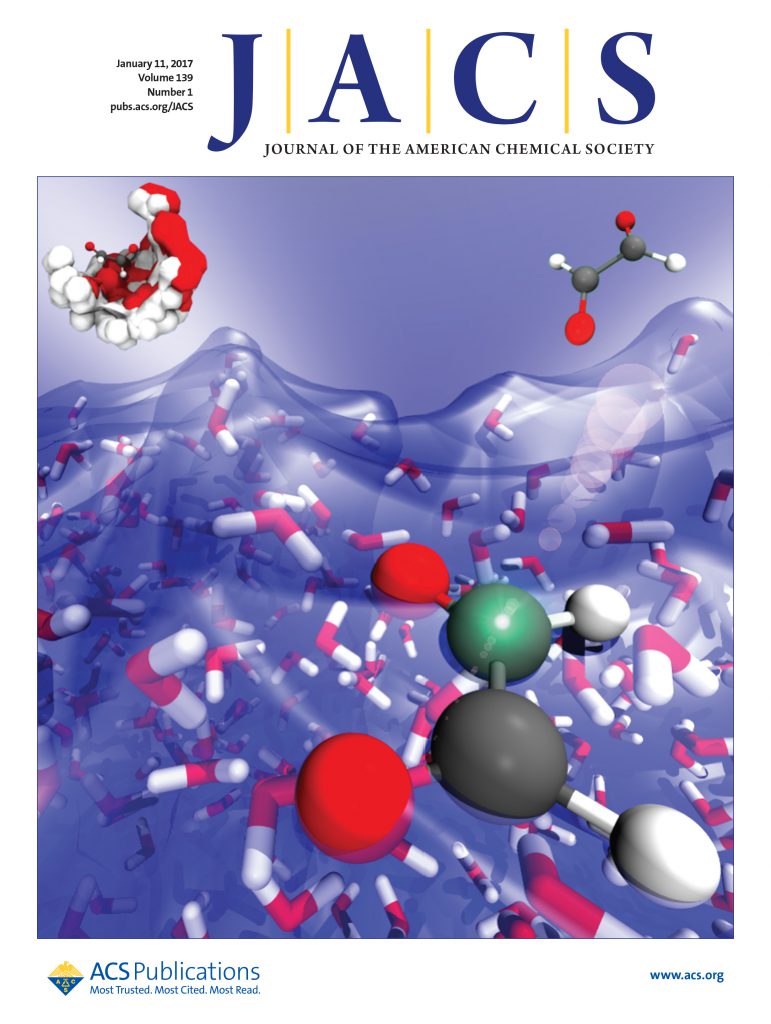A Self-Healing Crystal That Repairs Multiple Cracks
IF 14.4
1区 化学
Q1 CHEMISTRY, MULTIDISCIPLINARY
引用次数: 0
Abstract
We report both cracking and self-healing in crystals occurring during a thermal phase transition, followed by a topochemical polymerization. A squaramide-based monomer was designed where the azide and alkyne units of adjacent molecules are positioned favorably for a topochemical click reaction. The monomer undergoes spontaneous single-crystal-to-single-crystal (SCSC) polymerization at room temperature via regiospecific 1,3-dipolar cycloaddition, yielding the corresponding triazole-linked polymer in a few days. When heated at 60 °C, the polymerization completes in a SCSC manner in 24 h. Upon continuous heating from room temperature to 110 °C, the monomer crystals develop multiple cracks, and they self-heal immediately. The cracking occurs due to a thermal phase transition, as evidenced by differential scanning calorimetry (DSC). The cracks heal either upon further heating or upon cooling of the crystals due to the topochemical polymerization or reversal of the phase transition, respectively. Increasing the heating rate leads to the formation of longer and wider cracks, which also heal instantaneously. The self-healed crystals retained their integrity and the crystal structure of the self-healed crystals was analyzed by single-crystal X-ray diffraction. The quality of the self-healed crystals and their diffraction ability conform to those of the completely reacted crystals at room temperature or at 60 °C without developing cracks. This work demonstrates a novel mechanism for self-healing of molecular crystals that could expand the horizon of these materials for a plethora of applications.

能修复多处裂缝的自愈晶体
我们报告了在热相变过程中晶体发生的开裂和自愈现象,随后发生了拓扑化学聚合反应。我们设计了一种方酰胺基单体,相邻分子的叠氮和炔烃单元的位置有利于发生拓扑化学点击反应。这种单体在室温下通过区域特异性 1,3-二极环化反应发生自发的单晶-单晶(SCSC)聚合反应,几天后就能生成相应的三唑连接聚合物。从室温持续加热到 110°C 时,单体晶体会出现多条裂缝,并立即自愈。微分扫描量热仪(DSC)证明,裂纹是由于热相变引起的。进一步加热或冷却晶体后,裂纹会因表观化学聚合或相变逆转而愈合。提高加热速度会导致形成更长、更宽的裂缝,这些裂缝也会瞬间愈合。自愈合晶体保持了其完整性,并通过单晶 X 射线衍射分析了自愈合晶体的晶体结构。自愈合晶体的质量及其衍射能力与室温或 60 °C 下完全反应的晶体一致,没有出现裂纹。这项工作展示了分子晶体自愈合的新机制,可拓展这些材料的应用领域。
本文章由计算机程序翻译,如有差异,请以英文原文为准。
求助全文
约1分钟内获得全文
求助全文
来源期刊
CiteScore
24.40
自引率
6.00%
发文量
2398
审稿时长
1.6 months
期刊介绍:
The flagship journal of the American Chemical Society, known as the Journal of the American Chemical Society (JACS), has been a prestigious publication since its establishment in 1879. It holds a preeminent position in the field of chemistry and related interdisciplinary sciences. JACS is committed to disseminating cutting-edge research papers, covering a wide range of topics, and encompasses approximately 19,000 pages of Articles, Communications, and Perspectives annually. With a weekly publication frequency, JACS plays a vital role in advancing the field of chemistry by providing essential research.
文献相关原料
| 公司名称 | 产品信息 | 采购帮参考价格 |
|---|

 求助内容:
求助内容: 应助结果提醒方式:
应助结果提醒方式:


